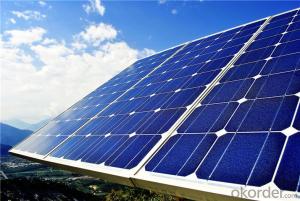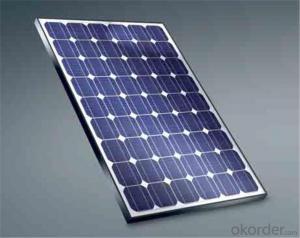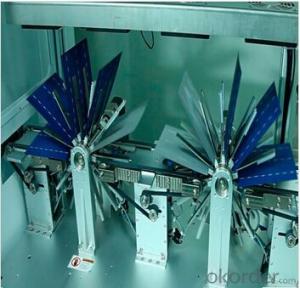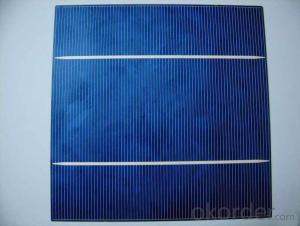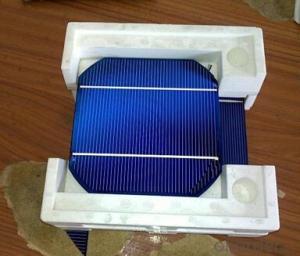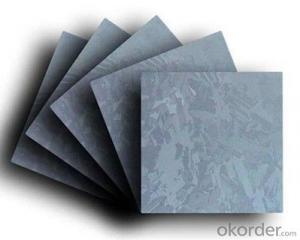265W Solar Panels for Home Use Solar Power System
- Loading Port:
- China main port
- Payment Terms:
- TT OR LC
- Min Order Qty:
- 10000 watt
- Supply Capability:
- 20000000 watt/month
OKorder Service Pledge
OKorder Financial Service
You Might Also Like
Destription:
Solar panel refers to a panel designed to absorb the sun's rays as a source of energy for generating electricity or heating. A PV module is a packaged, connected assembly of typically 6×10 solar cells. Solar PV panels constitute the solar array of a photovoltaic system that generates and supplies solar electricity in commercial and residential applications.
Main Characteristic
1.Manufactured according to international quality and Environment Management
System (ISO9001, ISO14001)
2. By the high transmittance, low iron tempered glass, anti-aging of the EVA(polyethylene - vinyl acetate), high-performance crystalline silicon solar cells, good Weather resistance TPT (fluoroplastics composite membrane) by pyramid , has a good Weather resistance and anti-UV, hail, water-proof capacity.
3. OEM and customerized package are accepted
4. High efficiency crystalline silicon solar cells
Quality warranty
1.10 years limited warranty on material and workmanship
2. more than 90% power output in 10 years
3. more than 80% power output in 25 years
Product show

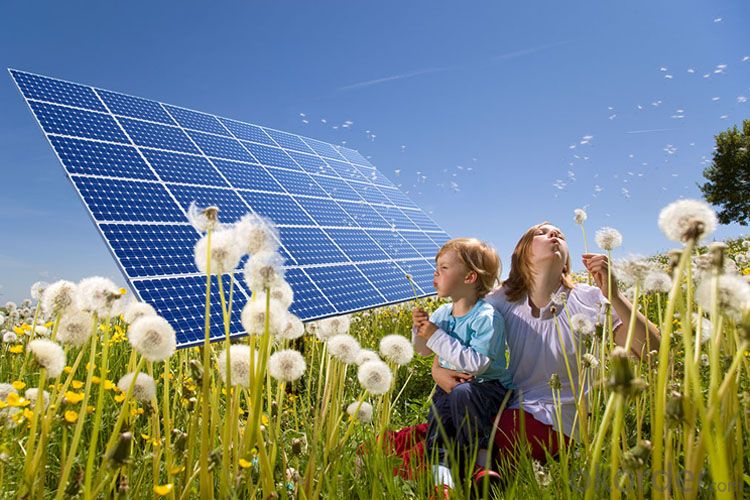
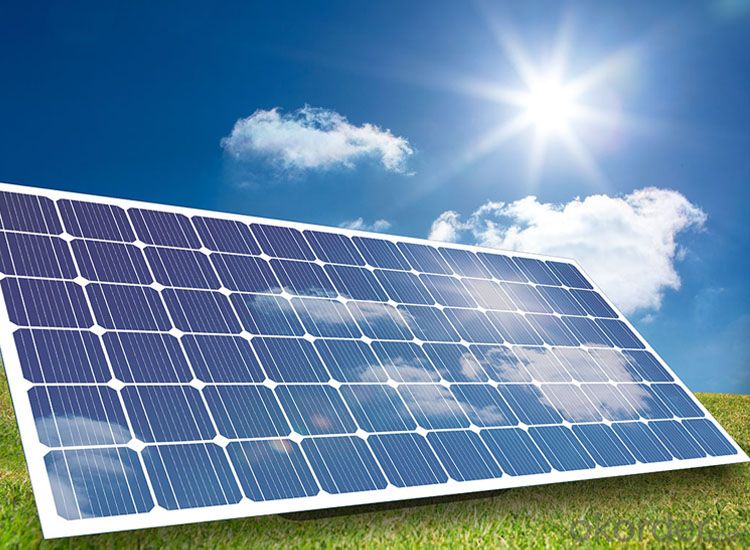


- Q:Can solar silicon wafers be used in remote or isolated areas?
- Yes, solar silicon wafers can be used in remote or isolated areas. Solar panels made from silicon wafers can generate electricity from sunlight, making them an ideal solution for areas where access to traditional power grids is limited or non-existent. The modular nature of solar panels allows for easy installation and scalability, making it feasible to meet the energy needs of remote or isolated communities. Additionally, advancements in battery storage technology enable the storage of excess energy generated during the day for use during nighttime or cloudy periods, further enhancing the viability of solar power in remote areas.
- Q:What are the disadvantages of using a solar silicon wafer?
- One of the main disadvantages of using a solar silicon wafer is its high production cost. The process of manufacturing silicon wafers involves complex and energy-intensive procedures, making them relatively expensive compared to other solar panel materials. Additionally, silicon wafers are rigid and fragile, making them prone to breakage during the installation or transportation process. Furthermore, silicon wafers have lower efficiency levels compared to other emerging solar technologies, such as thin-film solar cells. This reduced efficiency means that a larger surface area is required to generate the same amount of electricity, potentially limiting their use in space-constrained applications.
- Q:Can solar silicon wafers be used in recreational vehicles (RVs)?
- Yes, solar silicon wafers can be used in recreational vehicles (RVs) to generate electricity from sunlight and power various appliances and systems within the vehicle.
- Q:How do solar silicon wafers contribute to reducing the reliance on imported energy?
- Solar silicon wafers contribute to reducing the reliance on imported energy by enabling the production of solar panels, which generate electricity from sunlight. By harnessing renewable energy sources like solar power, countries can reduce their dependence on imported fossil fuels and traditional energy sources. This shift towards locally produced solar energy helps to decrease the need for importing energy, leading to greater energy independence and reducing the strain on foreign energy supplies.
- Q:How do solar silicon wafers perform in dusty and sandy environments?
- Solar silicon wafers can perform well in dusty and sandy environments, although the presence of dust and sand can impact their performance to some extent. The accumulation of dust and sand particles on the surface of solar panels can reduce the amount of sunlight reaching the silicon wafers, resulting in lower energy production. To mitigate this, regular cleaning of the panels is necessary to maintain optimal performance. Additionally, advancements in panel design and coatings have been made to minimize the impact of dust and sand, ensuring better performance in such environments.
- Q:How does the efficiency of a solar silicon wafer change with humidity?
- The efficiency of a solar silicon wafer typically decreases with increasing humidity. This is because higher humidity levels can lead to the formation of a thin layer of moisture on the surface of the wafer, which can reduce its ability to absorb sunlight effectively. Additionally, moisture can also contribute to electrical losses within the wafer, further decreasing its efficiency.
- Q:What is the impact of wafer thickness on solar silicon wafer performance?
- The impact of wafer thickness on solar silicon wafer performance is significant. Thicker wafers tend to have lower resistivity, which allows for better electron flow and higher efficiency in converting sunlight into electricity. Additionally, thicker wafers provide better mechanical stability and can withstand higher temperatures and stress, improving the overall durability and reliability of solar cells. However, thicker wafers also increase material and manufacturing costs, making them less economically viable. Therefore, finding the optimal wafer thickness is crucial to balancing performance, cost, and efficiency in solar cell production.
- Q:How are solar silicon wafers protected from physical damage during manufacturing and transportation?
- Solar silicon wafers are carefully protected from physical damage during manufacturing and transportation through various measures. Firstly, they are typically placed in special protective packaging such as trays or containers that provide cushioning and prevent direct contact with any hard surfaces. These packages are designed to absorb shocks and vibrations, reducing the risk of breakage. Additionally, the wafers may be coated with a thin layer of protective material, such as silicon nitride or silicon oxide, to safeguard them against scratches and potential chemical damage. Throughout the entire manufacturing and transportation process, great care is taken to ensure that the wafers are handled gently and avoid any impacts or rough handling that could result in physical damage.
- Q:How are solar silicon wafers protected from static electricity damage?
- Solar silicon wafers are protected from static electricity damage through the use of antistatic materials and precautions during handling and manufacturing processes. Antistatic coatings or films are applied to the wafers or their protective packaging to dissipate any static charges that may be present. Additionally, special packaging materials and procedures are utilized to minimize static electricity buildup and discharge during storage and transportation.
- Q:Are solar silicon wafers affected by voltage fluctuations?
- Yes, solar silicon wafers can be affected by voltage fluctuations. Fluctuations in voltage can impact the performance and efficiency of solar panels, as they rely on a stable and consistent voltage to generate electricity. Variations in voltage can cause fluctuations in current, which can lead to reduced power output or even damage to the solar cells. Therefore, it is important to ensure a stable and well-regulated voltage supply for optimal performance of solar silicon wafers.
1. Manufacturer Overview |
|
|---|---|
| Location | |
| Year Established | |
| Annual Output Value | |
| Main Markets | |
| Company Certifications | |
2. Manufacturer Certificates |
|
|---|---|
| a) Certification Name | |
| Range | |
| Reference | |
| Validity Period | |
3. Manufacturer Capability |
|
|---|---|
| a)Trade Capacity | |
| Nearest Port | |
| Export Percentage | |
| No.of Employees in Trade Department | |
| Language Spoken: | |
| b)Factory Information | |
| Factory Size: | |
| No. of Production Lines | |
| Contract Manufacturing | |
| Product Price Range | |
Send your message to us
265W Solar Panels for Home Use Solar Power System
- Loading Port:
- China main port
- Payment Terms:
- TT OR LC
- Min Order Qty:
- 10000 watt
- Supply Capability:
- 20000000 watt/month
OKorder Service Pledge
OKorder Financial Service
Similar products
New products
Hot products
Related keywords

